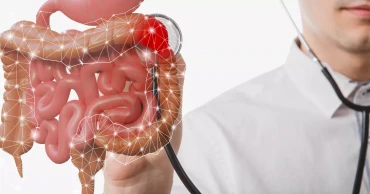illness
How to Keep Your Baby Comfortable and Healthy While Using Air Conditioner or Cooler
In Bangladesh's hot weather, air conditioners (ACs) and coolers often become necessities to beat the heat. However, as a parent, ensuring your baby’s comfort and wellbeing in such environments can be tricky. Babies are more sensitive to temperature changes, and without proper care, they might catch a cold. So, how do you balance the need for cooling while keeping your baby healthy?
Why Babies Catch Cold Under ACs
Babies Have Weaker Immune Systems
Babies, especially newborns, have developing immune systems. This means they are more susceptible to catching colds and infections, which can be triggered by their surrounding ambients, such as exposure to cold air from ACs.
Rapid Temperature Changes
One key reason babies catch cold under ACs is the rapid shift from warm to cool temperatures. Imagine stepping out of a hot, humid day into a chilled room—you will feel the difference immediately. For babies, such abrupt changes in temperature can hurt their respiratory system, making them more prone to colds and related illnesses.
Read more: How to comfortably travel with babies
Dry Air in AC Rooms
ACs tend to remove moisture from the air and make the room dry. Babies’ nasal passages can get dried out, making them more vulnerable to respiratory issues and colds. They may also experience dry skin, which can lead to discomfort.
Babies' Inability to Regulate Body Temperature
Unlike adults, babies cannot regulate their body temperature effectively. This means they might feel colder or warmer than you do under the same conditions. Though a room’s temperature might seem comfy for grown-up children and adults, it can be too cold for a baby, increasing risk of catching a cold.
1 year ago
Mpox: Common Signs and Symptoms
Mpox or Monkeypox has become a global concern over the last two years since its outbreak in the Democratic Republic of the Congo in 2022. Mpox has so far crossed the boundary of Africa and made its way through Europe to Asia. To ensure the prevention of this viral disease, mass awareness is a must. Let’s take a look into the early symptoms, rash progression, risk factors, incubation period, and contagious duration of the Monkeypox disease.
Major Signs and Symptoms of Mpox
In the early stages of sickness, people affected by Mpox will simply feel unwell. They will be seemingly showing “flu-like” symptoms. Most people will only suffer from these mild symptoms and recover within a period of 2 to 4 weeks.
Early Symptoms
Early symptoms of Mpox include:
Fever: A fever is often one of the first symptoms to appear when someone is infected with Mpox. The body’s temperature rises as a natural defense mechanism to help fight off the virus. This increase in temperature can range from a mild elevation to a high fever, often making the person feel very uncomfortable. The fever may come and go in waves and can be accompanied by a few other symptoms.
Read more: Pakistan's health ministry confirms a case of mpox but more tests are being done for its variant
Headache: Alongside fever, headaches are a common early symptom of Monkeypox. These headaches can vary in intensity, ranging from mild discomfort to severe pain. The headaches are usually persistent and can make concentration and everyday activities difficult.
Chills: Chills are often experienced as sudden, involuntary muscle contractions that result in shivering. This symptom usually accompanies the fever and can make a person feel cold even when the body temperature is elevated. Chills are a response to the body’s effort to raise its core temperature to fight the infection.
Joint Pains: Joint pains, also known as arthralgia, are common in the early stages of Monkeypox. This discomfort can affect any joint of the body, including the knees, elbows, wrists, and fingers. Joint pain can range from mild to severe and may be constant or intermittent. It often leads to stiffness and difficulty in movement, contributing to the overall feeling of malaise.
Read more: Congo's humanitarian crisis helped mpox spiral again into a global health emergency
Backache: Backache is another frequent symptom, often adding to the discomfort experienced during the early stages of Mpox. The pain is usually centered in the lower back but can also radiate to other areas. This pain can be persistent and may worsen with physical activity or prolonged sitting.
Muscle Aches: Muscle aches, or myalgia, are common and can affect various parts of the body. These aches can range from dull, persistent pain to more intense discomfort that limits movement. Muscle aches can affect the entire body or be localized to specific areas, making physical activities challenging and contributing to the overall sense of fatigue.
Swollen Lymph Nodes: Swollen lymph nodes, also known as lymphadenopathy, are a key indicator of Monkeypox infection. The lymph nodes, particularly those in the neck, armpits, and groin, may become tender and noticeably enlarged. This swelling occurs as the body’s immune system ramps up its response to fight the virus.
Read more: Health ministry issues mpox alert: Vigilance at entry points; no cases detected in Bangladesh yet
Extreme Tiredness: Extreme tiredness, or fatigue, is one of the most debilitating symptoms of Mpox. This profound exhaustion goes beyond normal tiredness, leaving individuals feeling drained and unable to perform everyday tasks. Fatigue can persist throughout the illness, even when other symptoms begin to improve.
1 year ago
What is Mpox? How does it affect people?
On August 14, The World Health Organization (WHO) declared Mpox or Monkeypox as a public health emergency of international concern, which is the highest alert the organization can decree. Since its earlier detection in the Democratic Republic of Congo in 2022, Mpox has been spreading across continents contaminating and killing thousands of people.
Recently, this deadly disease has been detected in Pakistan, sprouting fear in the neighboring South Asian countries. To stay safe, mass awareness should be raised against Mpox.
What is Mpox or Monkeypox?
Mpox or Monkeypox is a disease caused by the Mpox virus. When infected by this virus, people show symptoms similar to those of smallpox, like rashes, discolored and swollen lymph nodes, headache, muscle aches, fever, and so on.
Read more: Health ministry issues mpox alert: Vigilance at entry points; no cases detected in Bangladesh yet
Quite rare in humans, the Mpox virus mostly affects rodents, like rats, and mice, and primates, like gorillas, and monkeys. However, for the last two years, a new variation has been alarmingly raising concerns about infecting humans and causing deaths.
Mpox Variations
Till now, only two variations of the Mpox virus have been found liable for human illness—Clade I and Clade II. According to researchers, the variations liable for the recent outbreak and the outbreak in 2022 are different.
The global outbreak of 2022 that infected around 100,000 people was caused by the Clade II variation, whereas, Clade I is liable for the recent situation. The two mutant types share a few differences in terms of their ways of transmission, and symptoms.
Read more: How to Keep Your Skin Healthy During Monsoon
Clade I
Clade I shows a pattern in its process of transmission, taking advantage of a person’s immunodeficiency, making them weak, and slowly pushing them towards death. The mortality rate among the Clade I victims ranges from 1% to 10%.
As per reports, the victims have been mostly the inhabitants of Congo. However, the number of victims went up due to the rapid contamination among people in other areas of the world. Clade I is more frequent among children who are infected through contact with animals or other members of their families.
Clade II
Clade II is responsible for the 2022 outbreak of Mpox. The death rate of Clade II is low, counting only 1% to 4%. The severity of the illness is also more tolerable, causing rashes on a random part of the body mostly around the face and torso instead of the full body.
Read more: Congo's humanitarian crisis helped mpox spiral again into a global health emergency
How Did the Recent Variation of Mpox Spread?
The transmission pathways of Mpox are diverse, including close personal contact, contact with contaminated materials, and interaction with infected animals. Clade II, has shown unique patterns of spread, which has raised new concerns and challenges for public health efforts. Here are some common modes of Transmission of Mpox virus.
Close Personal Contact
The primary mode of Mpox transmission is through close, personal contact with an infected individual. This includes direct skin-to-skin contact with an infected person’s rashes, scabs, or bodily fluids.
The virus can also spread through contact with respiratory secretions such as saliva or mucus. Intimate activities, such as sex, as well as prolonged face-to-face interactions, can facilitate the transmission of the virus.
Read more: Pakistan's health ministry confirms a case of mpox but more tests are being done for its variant
In the 2022 global outbreak of Clade IIb, the virus predominantly spread through sexual contact. This pattern of transmission underscores the importance of targeted public health messaging and interventions to prevent the further spread of the virus in at-risk populations.
Contact with Contaminated Materials
Mpox can also spread through contact with objects, fabrics, and surfaces that have been contaminated by an infected person. Items like bedding, towels, clothing can harbor the virus if they are not properly disinfected.
This mode of transmission highlights the importance of maintaining good hygiene practices and ensuring that environments, where infected individuals have been, are thoroughly cleaned and disinfected.
Read more: Comprehensive Guide to the Best Home Fitness Equipment in Bangladesh for 2024
Animal-to-Human Transmission
Another significant route of Monkeypox transmission is through contact with infected animals. Mpox is endemic in certain wild animals in West and Central Africa, particularly rodents. People can contract the virus by hunting, trapping, or processing these animals, or through bites, scratches, or direct contact with an infected animal’s fluids or waste.
While the risk of transmission from pets is low, close contact with an infected pet, such as petting, cuddling, or sharing sleeping spaces, could potentially spread the virus to humans.
Recent Developments in Mpox Spread
In recent outbreaks, particularly in the Democratic Republic of Congo, the Clade I variant of the Mpox virus has shown an alarming trend of spreading through sexual contact.
Read more: Circadian Rhythm: How to Reset the Biological Master Clock
Moreover, early evidence indicates that Clade I might possess certain properties that enhance its ability to spread from person to person more easily. This has raised concerns about the potential for more widespread outbreaks, particularly in regions with limited surveillance and healthcare infrastructure.
Conclusion
The recent variations of Mpox, particularly Clade II and Clade I, have shown concerning patterns of transmission.
The virus's ability to spread through close personal contact, contaminated materials, and interaction with infected animals highlights the importance of public awareness and targeted health interventions.
Read more: Cerebral Haemorrhage: Signs, Reasons, Treatment, and Prevention
As the situation evolves, understanding the transmission pathways of Mpox or Monkeypox is essential for controlling the spread and protecting vulnerable populations.
1 year ago
Colon Cancer: Everything You Need to Know
Colorectal cancer, or colon cancer as it is commonly known, is a type of cancer that develops at the rectum or colon of the human body. WHO reports that colon cancer is the third leading type of cancer globally with 10% of all reported cases. It is also the third highest reason for cancer-related deaths. Let’s take a detailed look into the fatal disease, what causes it, and how people can potentially save themselves from colon cancer.
How Does Colon Cancer Develop?
The colon or the rectum is the terminal point of the digestive system. It is essentially a sac that houses the bowel and aids in the bowel movement process. The lining of the colon can develop precancerous polyps which can become cancerous over time.
It is important to note that all polyps are not cancerous. However, it is needed to medically treat them at the earliest as there is always the chance of it developing into cancer cells.
The exact cause of polyp development is unknown. However, scientists have often pointed out that genes and age play a crucial role in their development. Other factors like diets, obesity, smoking, and inflammation of the colon lining have been identified as leading causes thus far.
Read more: Measles: Causes, Symptoms and Prevention
What are the Symptoms and Causes of Colon Cancer?
Symptoms of colon cancer include:
Change in Bowel Movement
As a precursor to colon cancer, a patient often notices a significant shift in bowel movement. For example, the frequency of diarrhea, constipation, or a change in stool consistency is noticed.
Blood Discharge
A common symptom of colon cancer is the presence of blood in the stool. Patients may not feel any apparent discomfort but dark tarry stools may be noticed during bowel movement.
Pain in the Abdomen
Another common symptom of colon cancer is severe and lasting pain in the abdomen. It generally starts as mild discomfort and gradually moves to severe cramps.
Read more: JN.1: Symptoms, Prevention of and Precautions for the New COVID-19 Variant
Anemia
The blood discharge with stool may trigger anemia or loss of red corpuscles in the blood. Anemia also triggers weakness and fatigue which is a secondary symptom of colon cancer.
Unexpected Weight Loss
Another sign of any cancer in general is the unexpected loss of weight. Cancer patients including colon cancer ones tend to rapidly lose weight which may lead to secondary complications.
There are several known causes of colon cancer. These include:
Age
Age is one of the commonly identified factors behind colon cancer. Anyone over the age of 50 is at risk of contracting colon cancer though it might occur at any age.
Read more: Foods that Help Relieve Nausea and Vomiting
Family History
Genetics are also thought to be a reason behind colon cancer. Families with a history of Familial Adenomatous Polyposis or FAP and Lynch Syndrome tend to compound the chances of contracting colon cancer.
Personal Medical History
Colon cancers are often recurring, meaning they can come back even if it is treated completely. A personal medical history of colon cancer or repeated polyp formation may trigger renewed cancer cell generation in the colon linings.
Additionally, Inflammatory Bowel Diseases or IBDs like ulcerative colitis and Crohn’s disease increase the risk of contracting colon cancer. Patients with Type 2 diabetes also run the risk of developing colon cancer.
Read more: 10 Dengue Myths Debunked: Here are the Facts
1 year ago
Tips to Prevent Food Poisoning while Travelling
Travelling is an exciting adventure that exposes us to new cultures, cuisines, and experiences. However, amidst the excitement, one must be vigilant about food safety to ensure a healthy trip. Food poisoning can quickly turn a dream vacation into a nightmare. In this article, we will delve into useful tips to safeguard the tourists against food borne illnesses while on the move.
Practical Ways to Prevent Food Borne Illness While Travelling
Research Local Cuisine
Before journey, travellers need to delve into the local culinary scene and customary food safety protocols of their destination. This preliminary research equips them to make the right decisions about dining options. Understanding the local food landscape helps to anticipate what is in store and make choices that align with your own preferences and safety. It ensures a more enjoyable and worry-free gastronomic experience.
Choose Reputable Restaurants
It is better to select well-established, reputable restaurants renowned for their commitment to hygiene and patron safety. These dining venues adhere to rigorous cleanliness standards. This certifies a secure and pleasant dining environment. By choosing such establishments, a traveller not only guarantees a delightful culinary experience but also prioritises his or her health and well-being. In this case, the traveller knows that the food served is prepared and handled with the highest regard for safety and quality.
Read more: 7 Comforting Soups for Upset Stomach
Avoid Street Vendors with Poor Hygiene
Indulging in street food is tempting, but be discerning—steer clear of vendors with questionable hygiene. Instead, one may opt for those who maintain visible cleanliness and serve a steady stream of customers. Prioritising hygiene in street food adventures makes sure a safer culinary experience. It allows one to relish local flavours without compromising well-being during travels.
Drink Bottled Water
In certain regions, it is always suggested to opt for bottled water to guarantee safe consumption. It is safe to prioritise bottles with an unbroken seal, verifying their authenticity. This cautious approach ensures traveller’s hydration is clean and secure. It safeguards their health during travels. They should always try to make an informed choice to keep themselves refreshed and well, no matter where they go.
Wash Fruits and Vegetables Thoroughly
Before consuming raw fruits and vegetables, it is essential to wash them meticulously with clean water. This process helps eliminate any potential contaminants, including dirt, pesticides, or bacteria. It guarantees that what one eats is fresh, safe, and free of harmful substances. Taking this simple precaution significantly contributes to a healthy and enjoyable dining experience.
Read more: Upset Stomach Remedies: What to eat, drink and avoid
2 years ago
Social Welfare Minister discharged from hospital
Social Welfare Minister Nuruzzaman Ahmed on Thursday was discharged from a city hospital after a recovery from his illness.
The minister was receiving treatment for five days at United Hospital in the capital. His physical condition is now good, according to a PID handout.
Also read: Social Welfare minister admitted to Dhaka hospital after falling sick in Lalmonirhat
Nuruzzaman, the MP from Lalmonirhat-2, was first admitted to the cardiology department of Rangpur Medical College Hospital on May 7 last after he fell sick.
On May 8, the 72-year old minister was airlifted to United Hospital in Dhaka by an Air Force helicopter.
Also read: Social Welfare Association finally to get a law, Bill placed
3 years ago
Cases of viral respiratory illness rise sharply in China
Chinese health authorities urged people in the city of Wuhan to avoid crowds and public gatherings after warning on Wednesday that a new viral illness infecting hundreds of people in the country and causing at least nine deaths could spread further.
5 years ago
US to screen airline passengers from China for new illness
Three U.S. airports will screen passengers arriving from central China for a new virus that has sickened dozens, killed two and prompted worries about an international outbreak, health officials said Friday.
5 years ago














